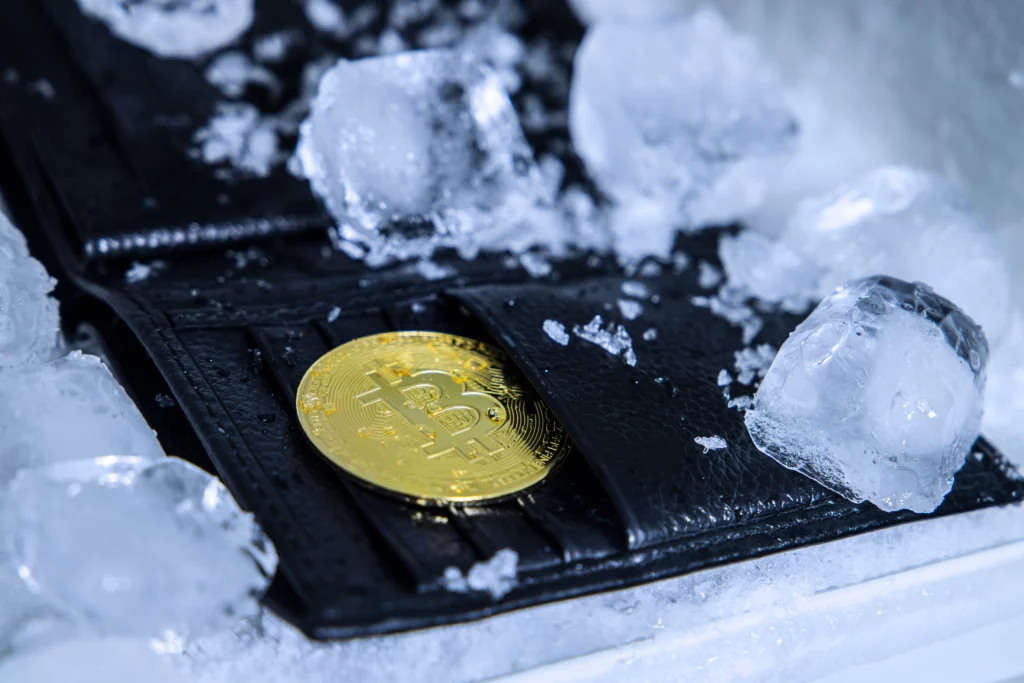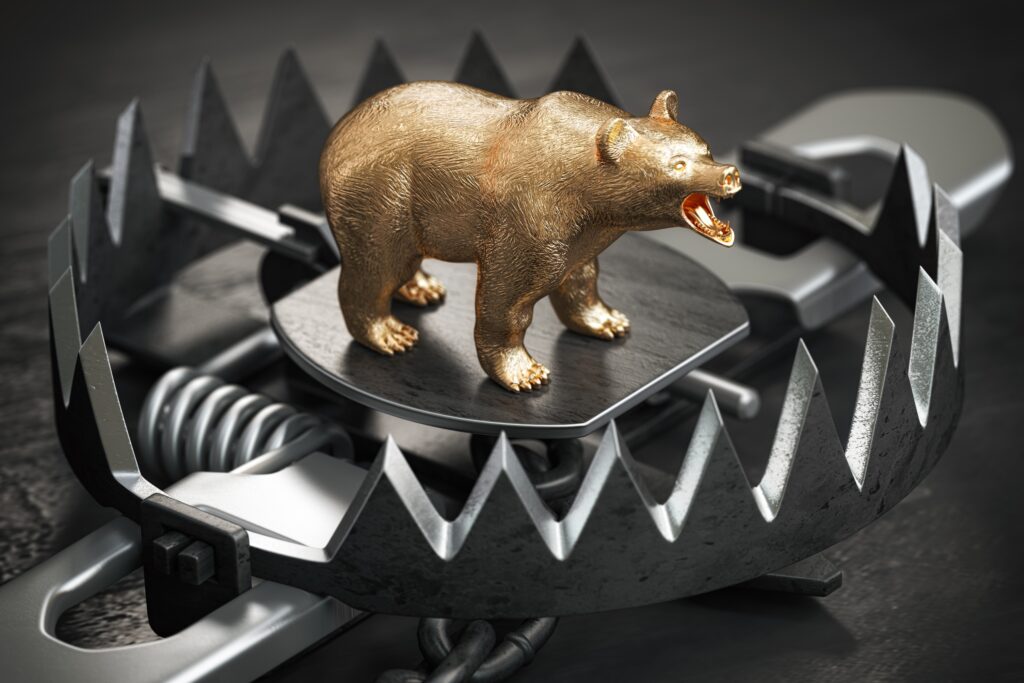The crypto market is currently deep in the bear market. This is characterised by a period of continued downward price movement in the market, which has been going since late 2021 when the total market topped $3 trillion.
Bitcoin and Ethereum are down 65% and 68% this year to trade at $16,860 and $1,222, respectively. Other majors are down 50% to 80% YTD, while most altcoins have lost 90% to 99% of their value since all-time highs (ATH).
Despite this, it can’t be said that the market has found its bottom. It is very much possible that we can see further downside in the coming weeks.
An Extended Crypto Winter

The bear market of 2022 marked the crash of the algorithmic stablecoin TerraUSD and centralised cryptocurrency exchange FTX. The contagion effect of these two big collapses resulted in many other entities getting wiped out and lowering crypto asset prices.
FTX’s $10 billion collapse has particularly shaken the confidence of many in the market, which can lead to an extended crypto winter as investors remain cautious about putting their money into digital assets.
Crypto winter is a term used to describe the market conditions in which the prices of cryptocurrencies experience a sustained and significant decline.
Last time, the crypto winter hit the market in 2018, when the prices of Bitcoin and other major cryptocurrencies fell by over 80%. It took four years for the market to regain its confidence and retail.
In May 2020, Bitcoin halving ignited the interest, which was carried forward into 2021 with the DeFi, NFT, and metaverse mania. The next Bitcoin halving will occur in March 2024, and there is a belief that the bull market will return that year, much like the last two times.
According to market psychology, financial markets tend to follow cyclic patterns, and the crypto market is expected to repeat the same pattern again. But with FTX’s implosion, it is also possible that this crypto winter can be even more severe and more prolonged than the last one. That would mean the majority of cryptocurrencies will become worthless. This would be a devastating blow to the crypto industry, and it would take years for the market to recover.
FTX Insolvency & Its Contagion

FTX filed for bankruptcy in the US on November 11 after insolvency caused a liquidity crisis, resulting in customers and investors losing billions of dollars.
Insolvency is when a company is unable to pay its debts. This can happen for several reasons, such as poor financial planning. If a company is insolvent, it may be required to enter into administration or liquidation.
FTX’s bankruptcy case involves more than 100 companies and could affect more than a million creditors. The Royal Bahamas Police arrested founder Sam Bankman-Fried (SBF) on December 13, and US prosecutors charged him with eight counts of criminal charges, including; wire fraud, conspiracy to commit wire fraud, and conspiracy to commit commodities fraud.
SBF was extradited to the US this week and has been granted bail by a US Magistrate Court after he signed a bond of $250 million on December 22.
With SBF facing years in prison, there is no doubt that the crypto industry is in the midst of a major crisis. Insolvencies are rising sharply, and many projects are struggling to stay afloat. FTX was the fourth crypto company to declare bankruptcy this year, joining BlockFi, Celsius Network, and Voyager Digital.
The rise in insolvencies is a significant cause for concern, and many more projects will likely go under in the coming months. This is a worrying trend, and it is clear that the industry is in a state of flux.
The bear market is also taking its toll on many crypto companies, and the situation will only worsen before it can get better. But fundamentally, the answer is simple.
Decentralisation is the Answer

The recent collapse of the crypto exchange FTX is a cautionary tale for the industry. The exchange, one of the largest in the world, was misusing customer funds. This type of thing would not be possible if the exchange were decentralised.
A decentralised exchange is not subject to the whims of a single entity and is much more resilient to collapses.
Decentralisation is the key here. When crypto is centralised, it is controlled by a small group of people, which can lead to issues such as manipulation and corruption, as we saw in the case of FTX.
The FTX situation further shows how important it is to keep coins in a self-custodial wallet after the crash. It is not yet clear, even now, just how much FTX contagion will spread, but for now, cryptocurrency users should strongly consider keeping their assets in self-custody.
Cryptocurrencies stored on exchanges are ultimately the property of their owners. In the case of the FTX users, they were being misused by SBF and its cohorts. While it might seem easier to keep your cryptocurrency on a centralized platform, doing that means giving up control. Most crypto holders must use self-custodial wallets to be 100% in control their assets. After all, “not your keys, not your coins.”
Not Your Keys, Not Your Crypto
Not your keys, not your crypto is a popular saying in the cryptocurrency community. The saying is simple, but it contains a lot of truth. It means that if you don’t own the private keys to your cryptocurrency, you don’t own it. This is because anyone with private keys can access and spend the cryptocurrency.
There are a few different ways to lose control of your crypto. One way is if you store your crypto on an exchange. You trust the exchange to keep your crypto safe when you do this. But exchanges have been hacked in the past, and if an exchange is hacked, you could lose your crypto.
Another way to lose control of your crypto is if you use a centralized wallet. With a centralised wallet, you trust a third party to keep your crypto safe. But if that third party is hacked, or if they go out of business, you could lose your crypto.
The only way to safeguard your crypto is to own the private keys. You have complete control over your crypto if you own the private keys. No one can take your crypto away from you, and no one can freeze your account. You’re in complete control.
How to Put Your Crypto on a Cold Wallet

A cold wallet is a cryptocurrency wallet that stores your private keys offline, away from the internet. This makes it much more difficult for hackers to access your funds, as they need to physically steal your device or find a way to break into your offline environment.
While pricey compared to most cryptocurrency wallets, cold storage is universally accepted as the most secure way of holding cryptocurrency. Anyone serious about keeping their funds secure for an extended period would be wise to own one.
There are two types of cold wallets, paper wallets, and hardware wallets. Paper wallets are low-tech solutions, while hardware wallets contain sophisticated high-tech components.
To put your crypto on a cold wallet, first get a hardware wallet, then set it up, which typically involves creating a PIN code and writing down your recovery seed. You’ll be required to generate an address to send your crypto to. Also, install the application on your computer. Now, plug in your USB cable to the device and your computer.
In the final step, send your crypto from the exchange or online wallet to your cold wallet address.
If you’d like to continue earning passive income while keeping your crypto safe in a cold wallet, cold staking is something worth looking into. Check out our step-by-step guide to cold staking here.
Conclusion
As the winter season continues, it is important to take extra care to protect your cryptocurrencies. One way to do this is to store your coins in cold storage, which can help to prevent them from being lost or stolen.
With a bit of planning and effort, you can ensure that your cryptocurrencies are well-protected against risks like FTX.









